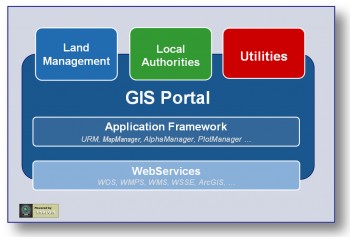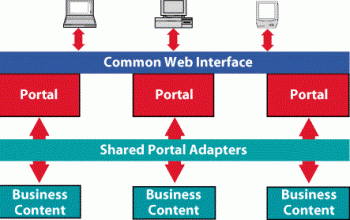What Does Web Portal Mean
It is a website designed to gather and deliver information using diverse sources. Each source of information has a specified location on the page to be displayed, but the ultimate discretion is that of the user who configures the source which he wants to be displayed.

The community web portals offer mashups and intranet dashboard to help the hierarchy, i.e. the managers and executives. The user’s attitude, diversity of the content and the requirements determine the uniform display of the content.
A certain type of metaphor is usually emphasized in order to configure or customize the way the contents are presented after configuration. The user has to decide which material needs to be added or removed from the portal.
The users are permitted to join and search the intranet content on the portal by using the API search engine. On the other hand they are restricted from joining and searching the extranet content by putting restrictions on the domains. The commonly used search engines offer number of services like e-mail, news, stock quotes, and information from databases and even entertainment content. Portals give the enterprises and organizations and opportunity to have a consistent look. They cherish the right of exercising the control over access which in any case is not possible. The accessibility is also restricted or authorized depending on what type of user is it i.e. authenticated or anonymous. The most commonly visited portals that are accessible even by public are AOL, Excite, Netvibes, iGoogle, MSN, Naver, Lycos, Indiatimes, Rediff, and Yahoo!.
Why the portal framework
Integrating, aggregating and personalizing the information – an enterprise portal or portal framework or enterprise information portal (EIP), helps in integrating the information, users and the procedures within the organizations and out of its boundaries. In this way they are similar to the commonly used ones or portals the ones that can be used by anyone. Such portals provide access to a unified point, which generally occurs as web based user interface. They are created in such a way that the information is aggregated and personalized with the help of ports that are application specific.
Decentralization and management of content – This is the hallmark of the portal framework that keeps the data updated by decentralization of the content and then content contribution.
Catering extra organizational individuals – it caters the needs of those which are not part of an organization but take full advantage of them. This includes customers, vendors and all those who lie outside the designated boundaries of the organization. This case is a bit different from the corporate portal which actually works within the organization.
Single Sign-On – Is a close link between the users and different systems. After the user is authenticated just once then he/she has the right to access anytime.
Integration – Refers to the establishment of the relation between the functions of multiple systems and other new components or ports or web parts by developing integrated navigation among them.
Federation – is using the WSRP and other technologies similar to this to integrate various contents on other portals.
Customization – This is a crucial feature that helps the user to customize the appearance of the environment by altering the feel and look of it. The customers can access the portals to edit and design the websites of their choice. This would be a complete representation of personality and style. They are also able to choose the content and services as per their need and requirements. It is the ability to arrange or select the content according to the user’s skill of prioritization on the basis of his personal attributes and metadata of the content available.

Personalization – Personalization is the art of relating the content with the user’s style. It takes into account the profile of the user and then creates the services and content as per his choice. This separates the customization from personalization in such a way that customization becomes a user based activity while personalization does not. In fact, the actual personalization is based on the user’s role within the portal context.
Access Control – Access control is defined as the tendency of the portal to limit the access to several types of contents and services in the portal. The rule is applicable in case of a company who wants to keep the proprietary information within its own members. The portal administrator will give the right to access through a proper procedure. The access control helps to manage the mapping between portal content and user based portal.
Conclusion
The portal framework is preferred because of its dual function of integration and presentation. It therefore, can seek information from diverse multiple sources and then further manipulate them through the portal.
